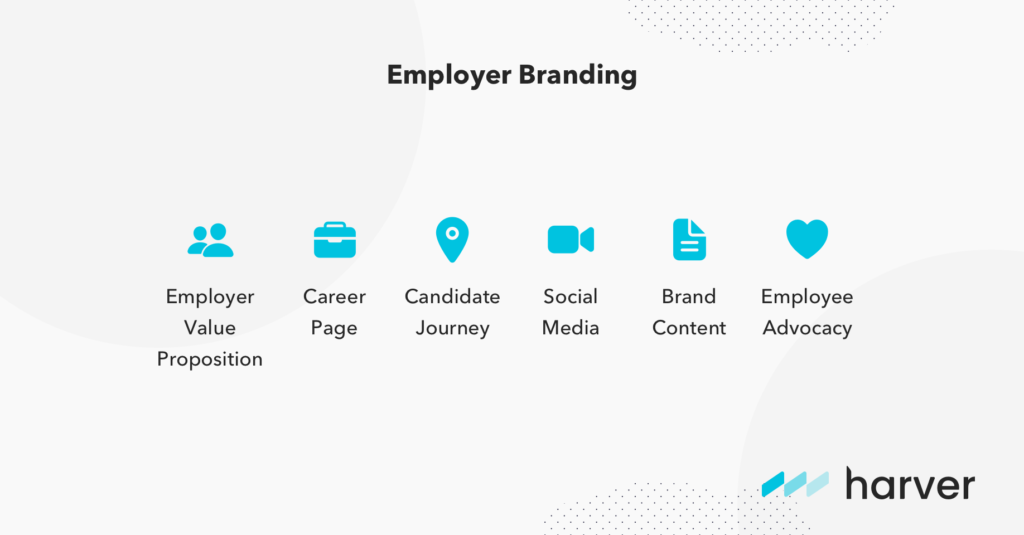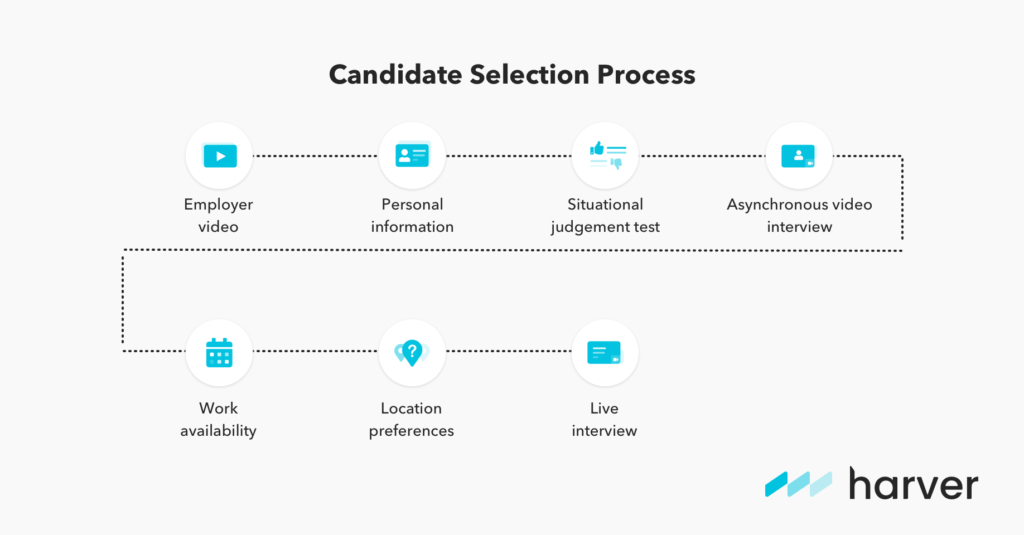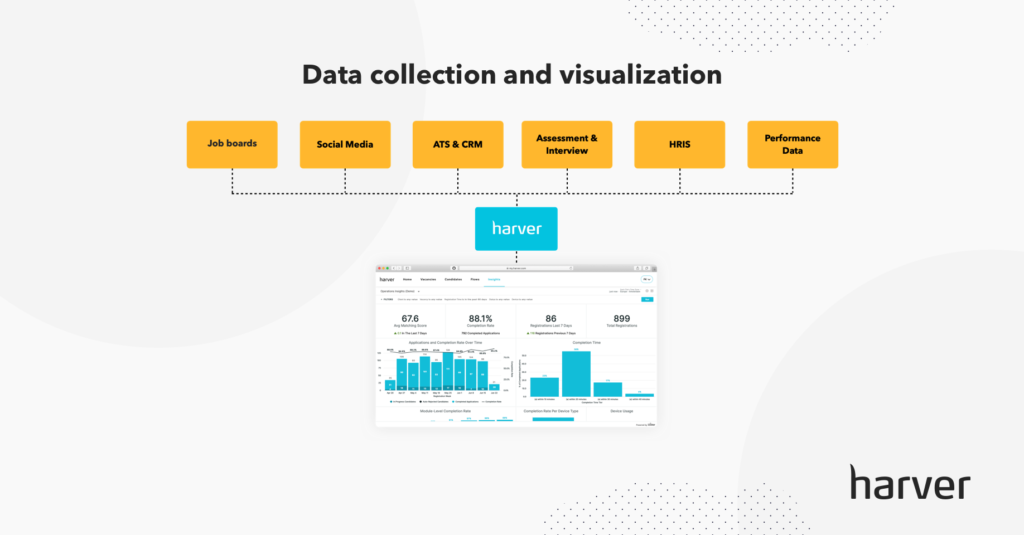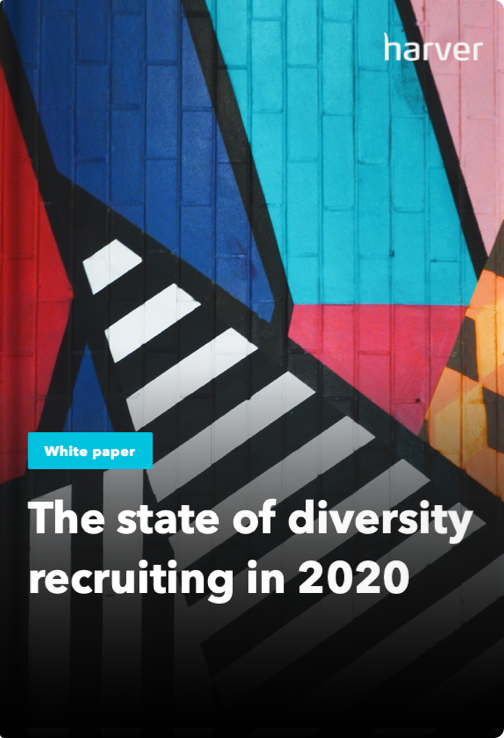COVID has taught us that the labor market is unpredictable and as an employer doing volume hiring, you need to be proactive, not reactive, to meet demand. This means that you need to build a global brand that is top of mind for potential candidates. One that stands out from competitors, that is trusted by prospective applicants and employees alike.
However, building an employer brand requires a coherent strategy, especially for large multinational brands that need to ensure global consistency, while maintaining local specificity.
What does that look like?
In this article we will explore the components of an employer branding strategy, the specifics for organizations in the volume hiring space, and how you can develop your employer branding strategy.
What's in?
Like what you see?
Don’t miss out. Subscribe to our quarterly digest to get the latest TA and TM resources delivered right to your inbox.
Components of the employer branding strategy
Employer branding isn’t just nice to have, it’s critical to your bottom line. Strong employer branding will help attract top talent in case of shortages, and improve employee retention. A good employer brand can reduce your turnover rates and cut your cost to hire.
While your employer brand is about your reputation, it’s more than simply being known as a fun place to work. Your employer brand is how you market your company to job seekers, it’s what your employees say about your organization, and what their employee experience is of working for you.
But what goes into creating an employer branding strategy?
Goals
Defining clear goals is an essential part of your strategy, it’s how you measure the impact of your employer branding. Common goals include:
- Increase candidate engagement
- Improvement in trust with current employees
- Build a positive reputation as an employer
- Increase referral rates
- Increase number of high quality applicants
- Increase organic traffic to your careers site
- Increase employee engagement
- Reduction in time to hire
- Reduction in cost to hire
- Improve candidate experience
- Improve offer acceptance rate
- Reduction in application drop off rate
- Increase in Glassdoor ratings
Building blocks

Before creating a strategy, you need to find out what your existing brand reputation is. You can do this by conducting internal surveys and reviewing social media platforms for comments, as well as by auditing your reviews on job boards.
-
Employer value proposition.
What is your mission statement, your values, your vision, your culture? What are your business needs? What type of talent are you after? -
Employee value proposition.
What do you offer employees beyond compensation? What impact do you have on the wider world? What’s your deeper purpose? Gen Z care deeply about more than just a paycheck, they want a company with values that align with theirs. They care about cultural inclusivity, sustainability and a healthy work life balance. -
Employee advocacy.
Who better to be brand ambassadors and appeal to potential candidates than the people doing the job right now. Their voices are 3X more powerful than the CEO when it comes to building trust and brand efforts. -
Application process.
Your application process needs to be an extension of your organization and reflect your employer brand. Is the first time the majority of applicants will have any experience with your company. So instead of relying on outdated methods, you can make the experience more interactive by incorporating employer videos, or situational judgment tests that offer candidates realistic job previews and showcase the work environment and culture.

-
Onboarding process.
Cultivate a strong onboarding process that flows smoothly on from the application. New employees who have a negative experience during onboarding are 2X more likely to churn. -
Continuous learning and development.
Reduce employee turnover by investing in their futures. Offer more than just a paycheck, offer them a career path. Encourage them to pursue learning opportunities, to undergo training, support upskilling. Outline a clear pathway from the entry level role through to team leader and beyond. -
Communication channels.
To reach the widest audience, you need to be on the platforms they are, creating employer branding content that delivers the value applicants need. Consider how you can promote your employer brand on social networks, careers page, through current employees, lectures and workshops, career fairs, inbound recruiting, job advertising, candidate relationship management, application process, etc. -
Diversity and inclusion initiative.
A strong employer brand is dedicated to building diverse teams. Your marketing strategy needs to include initiatives that allow you to reach different groups of people.
The state of diversity recruiting in 2020
Tools
You don’t have to reinvent the wheel. There are multiple tools to help you build your global employer branding strategy:
- EBnavi – All in one platform to audit your employer brand.
- Altru – Employee storytelling software.
- Visage – Allow your entire organization become brand storytellers.
- Glassdoor: Gives you behind-the-scenes reviews of companies.
- Culture Amp – Source employee feedback and turn insights into action.
Analytics
Once you’ve set clear, realistic and measurable recruitment objectives, track them. Understand which employer branding activities are working and which aren’t. Look at numbers that reflect the health of your recruitment funnel, the performance of your sourcing channels, the brand sentiment across social media platforms and review sites.
Note: With Harver, you can streamline your volume hiring process and showcase your employer brand and company culture during the application process, while collecting data from multiple touchpoints and visualizing it in an easy to understand manner. Our BI suite gives you clear visibility into your recruitment performance, allowing you to make better business decisions.

Effective employer branding specifics for volume hiring companies
Think global, act local
Global companies need a unified brand, however if you’re hiring globally, be mindful that you might need to adapt your branding i.e. your language or imagery, to accommodate local preference and sensitivities. For example, you might want to add voice overs to videos if filming in one language only, or you might want to showcase how diverse the workplace is in countries where this aspect is more sensitive.
Centralized recruitment strategy
While you might outsource the actual hiring to local managers, make sure that you have a unified recruitment strategy and job application flow in place. While each location may have different hiring needs, or be hiring to fill different positions, you want all applicants to experience the same outstanding application process.
You’ll also want to put in place a standardized method for collecting candidate feedback too. Similarly, implement a standard method for communicating with candidates. Just bear in mind that local communication preferences may exist and you may need to defer to local expertise for best practice.
Leverage your existing high performers
Most companies which carry out volume hiring do so to fill low-complexity, entry-level jobs. Many of these roles don’t have the best working conditions – long hours, limited flexibility, low pay, etc, making them the perfect breeding ground for discontented employees. And unhappy people have a tendency to share their disgruntlement.
While you can’t stop people sharing negative experiences and reviews about you, what you can do is work to improve your brand image. An employee voice is much louder than that of your C-suite, so one way to do this is to leverage your existing high performers to help market the role by creating employee-generated content, such as comments, reviews, testimonials.
Build your culture into the branding
At scale, when you have hundreds and thousands of employees that leave after a few months only (high attrition rates), it’s very hard to build a culture. But culture can be as simple as the way employees behave, their values, their work attitudes, even how they dress.
Highlight your company culture in all your communications, i.e. your website, your social media channels, even in internal memos. If you make your culture a part of everything you do, you’ll find it much easier to build it into your branding.
Process of developing an employer branding strategy
Now that we’ve covered the component of an employer branding strategy, and the employer branding specifics for volume hiring companies, how can you put all of this into practice?
Here are 8 steps to develop an employer branding strategy:
1. Audit your existing brand
Before you begin developing your branding strategy, you need to have a clear understanding of how your organization is currently viewed, otherwise how will you know what needs adjusting and optimizing?
Carry out a thorough brand perception from both existing employees and external stakeholders. How are they viewing your current messaging? What is your current reputation? Does it align with the values your putting out? For example, in global organizations with teams around the world, it’s easy for values to be misinterpreted or mistranslated.
Places you should be auditing include:
- Employment review sites i.e. Glassdoor or Indeed
- Social media
- Employee feedback i.e. internal pulse surveys, open forums, exit interviews, onboarding interviews
2. Build a strong employee value proposition
Employer branding starts from within, with your employee value proposition (EVP). If your employer brand is the external, creative face your organization shows the outside world, your EVP is internal.
Where your employer branding tells potential employees the ‘how’ and the ‘what’ to expect if they come and work for you. Your EVP tells them the ‘why’.
It’s the promise you make to your employees, as their employer, in return for their commitment to your organization. It’s the unique set of benefits that your employees will receive in return for the capabilities, skills and experience that they bring to your company. A strong EVP will help you to retain your top performers as well as attract the best talent.

The strongest EVPs are made up of 5 essential elements or categories:
- Organization, which includes the reputation, market position, industry, size, and diversity
- Rewards, which includes compensation, health benefits, leave and schedule
- People, including manager and coworker quality, management practices, senior leadership, and camaraderie
- Opportunity, which includes development opportunities, future career path, growth rate, and meritocracy
- Work, including job impact, innovation, work-life balance, recognition, and travel time
Together these elements determine how your employees and potential candidates perceive your organization as an employer.
In a world where employees are attaching value to an organization’s reputation as an employer, building a strong EVP is as important as developing your employer branding. Your employer branding will attract people to your organization, your EVP will help make them stay.
3. Understand your talent acquisition challenges and requirements
When building your global employer branding strategy, you have to think beyond your immediate concerns and requirements to what your future talent acquisition (TA) challenges and needs are going to be. Don’t just focus on what your current hiring process challenges are.
Align your recruitment strategy with the organization’s growth strategy. And then rather than be reactive everytime you find yourself in a hard hiring situation, make a plan now to recruit for the future.
Outline your ideal candidates, what specific skill set, characteristics, traits, experience or knowledge do they have? Where do they hang out? Where do they look for jobs? How can you capture their attention? What are their career goals? What drives them? How can you meet their needs?
4. Personalize your campaigns
Don’t try to make your employer branding everything to everyone. You know what’s at the heart of the organization – your mission and your core values. Use these to develop personalized campaigns that target key audiences, as and when you need to recruit them.
To personalize campaigns, create ideal candidate personas. The easiest way to start is to identify your existing top performers and really get to know them:
- What is important to them?
- What are their values?
- What do they want out of a job – career, growth, pay, culture, flexibility, environment etc?
- Where do they look for jobs?
- If they were passive job seekers, what would pique their interest?
Once you know your ideal audience’s wants and needs, it’s much easier to create content that appeals to them, where they are.
5. Engage employees to be brand advocates for you
The best spokespeople to help build brand awareness for your organization are your current employees. They’re the ones who live and breathe your job daily. When it comes to talking about working conditions, employee voices are 3X more credible than the C-suite. They’re the ones you want to send out into the world as your brand ambassadors.
If you can persuade your employees to be brand advocates for you, your external communications with potential candidates will be much more authentic, credible and attractive to job seekers. Candidates want to hear from the people who do the job day in and day out:
- What it’s really like to work there.
- What a day in your organization looks like.
- What the nature of the work entails.
- Why the employee applied.
- What made them stay.
- What makes working at your organization different from another similar company.
6. Deliver a positive candidate experience
Your employer branding doesn’t stop once a candidate applies to your role. If you’ve spent huge amounts of time and money on talent acquisition, the last thing you want is for applicants to drop out of your pipeline because the process is overly complex or dull. You need to carry your employer branding through the application process, making sure that as much of your branding and company culture is shown where possible.
Your application process is where many of your candidates will get their first taste of what your organization is like. Maximize the opportunity to show them how great it is working for your company, should they be successful.
But remember, there is nowhere to hide. If you give candidates a poor experience, or you mistreat employees, expect it all to be shared online, with companies such as Glassdoor making it easy for applicants and employees to share their (negative) experience.
7. Track your efforts
Set clear goals and measure against them. There is no one size fits all when it comes to tracking and measuring your branding metrics. The metrics you track are dependent entirely on your goals and what you want to achieve with your employer branding strategy.
You won’t know if you’ve reached your goals if you don’t track your efforts. Nor will you know where you need to work to improve future campaigns and get the highest ROI.
8. Analyze the data
One of the most critical parts of building a global employer branding strategy is ensuring you’re equipped to not only collect data, but analyze it too.
Harver’s BI suite, for example, offers a library of off-the-shelf TA dashboards with ready to go visualizations which are powered by over 100 individual data points. Each of the dashboards is designed to monitor the health of your recruitment process, and ultimately your employer branding strategy.
Recruiters and HR can access a series of dashboards including:
- Candidate experience Insights
- Sourcing insights
- Hiring insights
- Bias insights
Each dashboard has a suite of configurable filters that your team can use to slice and dice the data you collect, giving you the answers you need, in real time, providing you with a snapshot of your branding efforts at any given moment.
Take for example the sourcing insights dashboard. If one of your goals for your employer branding strategy is to improve the quality of candidates, you’ll want to be able to A/B test employer branding campaigns to see which has the biggest impact on improving candidate quality.
Once you do this, you’ll need a way of breaking down the data, including new hire and performance data, to check your efforts and identify where the best candidates are coming from. Which is precisely what this dashboard does.
Or what about if you want to improve D&I even when hiring at scale? Well, we’ve developed the bias insights dashboard to show you how inclusive your recruitment process is, even when volume hiring. And where, if any, instances of systemic bias are creeping in and negatively impacting your employer branding.
Next steps
Employer branding isn’t a one and done activity. While you can cultivate an employer branding strategy and shape your messaging, you cannot control what other people think or say about you when you’re not in the room. To be viewed as an employer of choice, you need to be continually monitoring, testing and adjusting to make sure you’re appealing to the right candidates, with the right skillset, at the right time.
As you track your branding efforts, you’ll be able to see what is working in your strategy and what isn’t. With a data driven approach, you can easily fine tune your efforts, you can invest more time and money in different channels, or optimize elsewhere. By routinely tracking, measuring and analyzing recruitment data, you can see how successful your employer branding strategy is.
If you’d like to find out more about how Harver can help you showcase your employer brand during the application process, you can book a demo below.
Ready to transform your hiring process?


